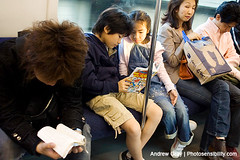Osamu Tezuka is considered to be the Japanese equivalent of Walt Disney and as a real god in Japan, says Ludovic Graillat at Refractory, a Journal of Entertainment Media.
He was an admirer of Disney’s animated movies (he saw Bambi over eighty times) and it is due to this influence that he decided to draw large, rounded eyes on his characters. Mangakas influenced by Tesuka also give their heroes large eyes and this became one of the main characteristics of manga and anime.
The eye allows the expression of a wide range of emotions, something that becomes essential for action based manga and anime. The more a character is perceived to be ‘alive’, the greater the engagement between the character and the spectator. An adult has to suspend his/her disbelief and to believe in the “illusion of reality” in order to identify with a character. Roland Barthes argued that the eye reflected the soul. If a character has a soul, he/she also has emotions and appears to be ‘alive’.
But we should clarify two things. Firstly, not all mangakas draw big eyes on their characters and yet the spectator still manages to identify with them (for example Miyazaki’s characters don’t have large eyes - Ghibli’s studio intended to produce different anime).
Furthermore, it has been suggested that the large eyes do not come from Disney. For Alessandro Gomarasca big eyes are part of the Euro-American aesthetic called the “cute” (2002, 36-37). In his book Kaboom! Explosive Animation from America and Japan, Philip Brophy explains that, “the aim of the Euro-American iconography of the cute does not copy the childhood, but it signifies childhood with a specific codification (the child’s biomorph), mostly represented in comic books and animation films.
Subscribe to:
Post Comments (Atom)


No comments:
Post a Comment